Time:2025-07-16
The Renaissance of Custom Neon: Blending Heritage and Innovation
In an era where brand identity and spatial aesthetics demand uniqueness, custom neon signs have transcended their retro associations to become a cornerstone of modern design. These bespoke illuminated creations merge the timeless allure of neon’s warm glow with cutting-edge technology, offering unparalleled versatility for businesses, artists, and homeowners alike. From minimalist corporate logos to whimsical artistic installations, custom neon signs serve as dynamic storytelling tools, transforming spaces into immersive experiences. This article explores the latest advancements, emerging applications, and nuanced design strategies that define today’s custom neon landscape, providing a fresh perspective for industry professionals and enthusiasts seeking to leverage their transformative potential.
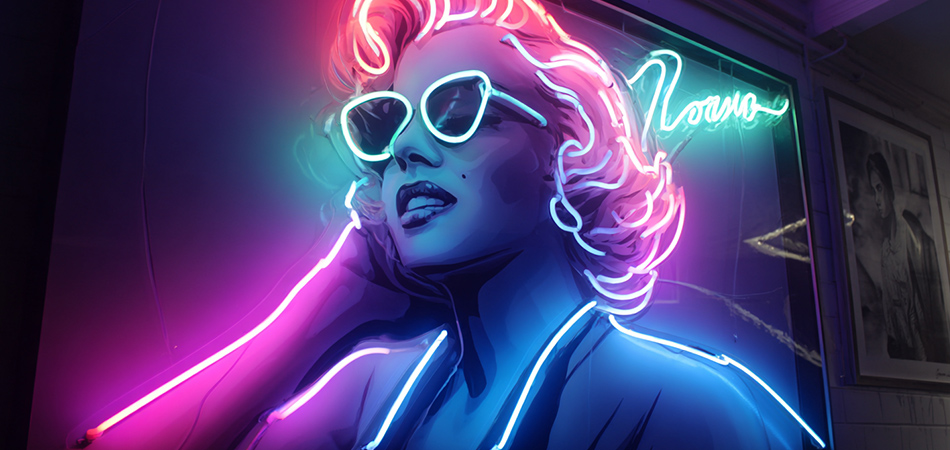
Material Innovations: Beyond Traditional Neon
Next-Generation LED Neon Flex
Bio-Based Encapsulants: New formulations use plant-derived silicone (30–50% renewable content) to encase LEDs, reducing reliance on petroleum-based materials while maintaining flexibility and waterproofing. These eco-friendly casings meet stringent durability standards, making them suitable for both indoor and outdoor use.
Micro-LED Integration: Ultra-compact LEDs (under 0.5mm) enable finer detail in custom designs, allowing for intricate typography and micro-patterns previously impossible with standard LED neon. This precision is ideal for luxury branding and high-end retail displays.
Hybrid Neon Technologies
Neon-Glass Composites: A fusion of traditional glass neon tubes with LED backlighting, creating layered effects—e.g., a glass neon outline with LED fill for enhanced depth. This hybrid approach retains the vintage charm of glass while adding the efficiency of LEDs.
Photochromic Neon: Casings embedded with light-reactive pigments that shift hue based on ambient light, transforming from soft pastels in daylight to vibrant tones at night. This adaptive technology is popular in hospitality settings, where ambiance shifts with the time of day.
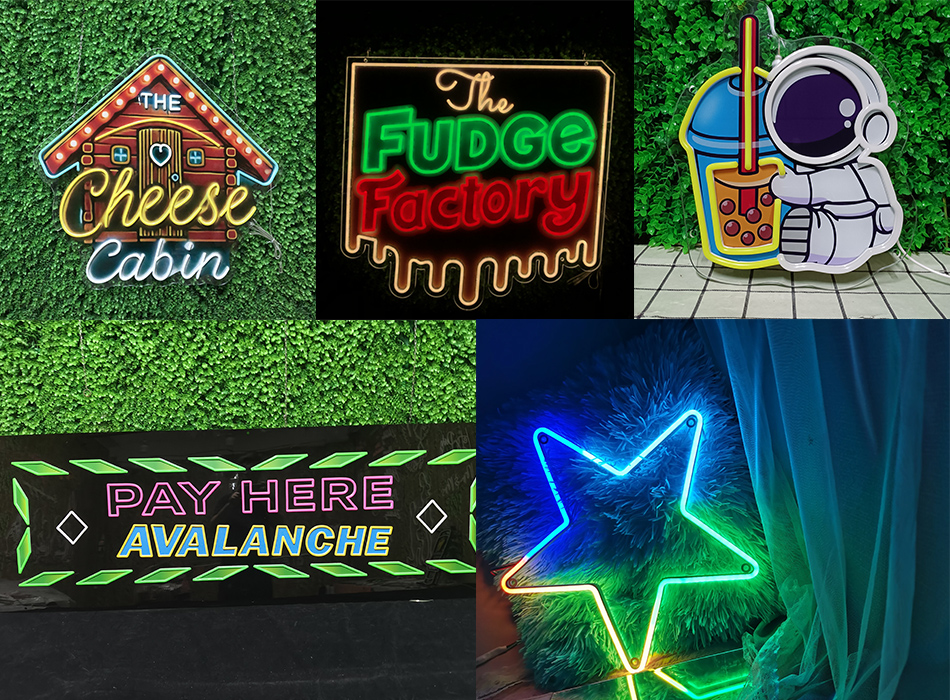
Design Trends Shaping Custom Neon Aesthetics
Minimalism with Maximum Impact
Negative Space Utilization: Designs that prioritize empty space around neon elements, such as a single word with exaggerated letter spacing, creating a sleek, modern look. This approach works particularly well in minimalist offices and high-end retail environments.
Monochromatic Sophistication: Moving beyond bold primaries, designers now favor muted tones—soft blush, sage green, or slate blue—paired with matte black backings to create understated elegance. These palettes align with contemporary interior design trends, appealing to upscale brands.
Interactive and Responsive Designs
Motion-Activated Neon: Sensors trigger light sequences when motion is detected, such as a logo that pulses or shifts color as customers approach a storefront. This interactivity enhances engagement in retail and hospitality spaces.
Sound-Synchronized Systems: Neon signs programmed to react to audio input, with LED patterns matching music beats or voice commands. This technology is gaining traction in entertainment venues and experiential marketing events.
Cultural and Artistic Expression
Cultural Symbolism: Custom neon incorporating regional motifs—e.g., geometric patterns inspired by Indigenous art, or calligraphic scripts reflecting local heritage—serving as both decorative elements and cultural touchpoints in public spaces.
Collaborative Art Installations: Artists partnering with neon fabricators to create large-scale, site-specific works. These pieces often blend neon with other mediums like metal or digital projections, pushing the boundaries of traditional signage.
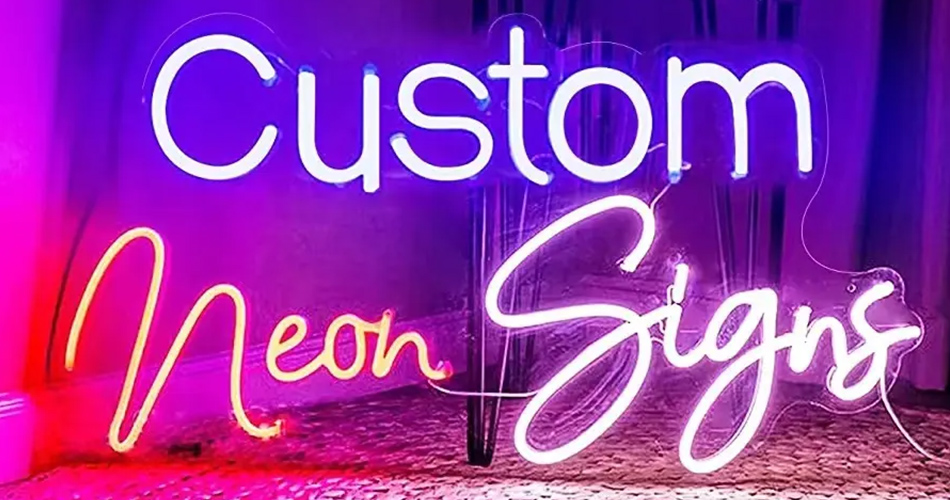
Niche Applications: Expanding Beyond Retail
Healthcare and Wellness Environments
Therapeutic Illumination: Custom neon in calming hues (soft blue, lavender) installed in hospitals and wellness centers, proven to reduce patient anxiety. Designs often feature nature-inspired motifs—e.g., gently curving lines mimicking water or foliage.
Healthcare Wayfinding: Subtle neon accents guiding visitors through complex medical facilities, with dimmable settings to avoid harsh glare in sensitive areas like recovery rooms.
Educational Institutions
Campus Identity: Universities commissioning custom neon to highlight school mascots, mottos, or historical milestones in common areas. These signs foster community pride while adding visual interest to otherwise utilitarian spaces.
STEM Labs and Makerspaces: Neon installations illustrating scientific concepts—e.g., molecular structures or mathematical equations—serving as both educational tools and decorative elements.
Residential Luxury and Tiny Spaces
Smart Home Integration: Custom neon synced with home automation systems, adjusting brightness and color to complement circadian rhythms (e.g., warm orange in evenings, cool white in mornings). These signs often double as smart lighting controls via voice commands.
Micro-Living Solutions: Compact neon designs tailored for small apartments, such as under-cabinet neon strips or wall-mounted name signs that save space while adding personality. Magnetic mounts allow easy repositioning, appealing to renters.
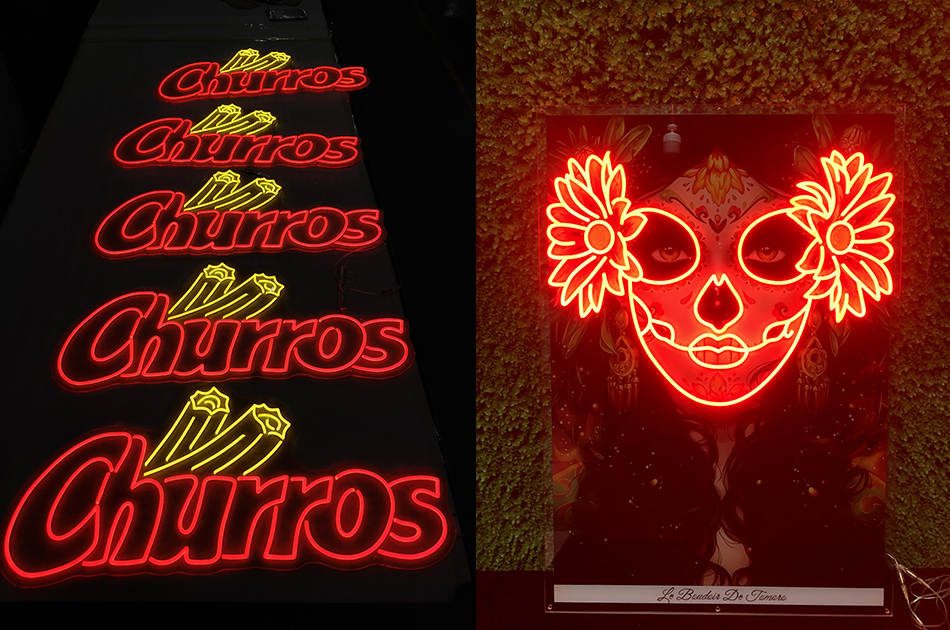
Sustainability: The New Standard in Neon Production
Circular Economy Practices
Closed-Loop Manufacturing: Facilities that recycle scrap neon materials—glass tubes, LED components, and metal frames—reclaiming rare gases from traditional neon and repurposing LED diodes for new signs. This reduces waste and lowers production costs.
Take-Back Programs: Manufacturers offering free recycling for end-of-life neon signs, ensuring hazardous materials (like mercury in older glass neon) are disposed of safely. Some brands even offer discounts on new signs when customers return old ones.
Energy Efficiency Beyond LEDs
Kinetic Energy Harvesting: Experimental designs integrating small solar panels or vibration sensors (in high-traffic areas) to supplement power, reducing reliance on grid electricity. These are particularly viable for outdoor signs in sunny or busy locations.
Zero-Emission Production: Facilities powered by renewable energy (solar, wind) that use low-VOC adhesives and water-based finishes, minimizing the carbon footprint of custom neon manufacturing.
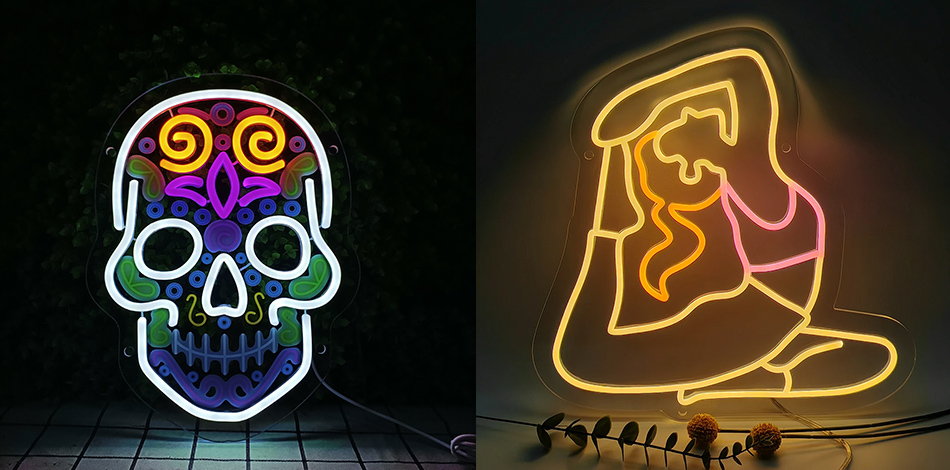
Navigating the Custom Neon Marketplace
Selecting a Provider: New Evaluation Criteria
Design Collaboration Tools: Prioritize fabricators offering 3D augmented reality (AR) previews, allowing clients to visualize signs in their space via smartphone apps. This reduces revision cycles and ensures alignment with expectations.
Cultural Competence: For projects incorporating regional or cultural motifs, choose providers with experience in translating diverse design languages accurately, avoiding cultural misappropriation.
Scalability: Brands requiring multiple identical signs (e.g., franchise locations) should verify a manufacturer’s ability to replicate designs with precision across batches, ensuring consistency in color and form.
Cost Optimization Strategies
Phased Implementation: For large projects, start with key focal points (e.g., a store entrance sign) and expand later, spreading costs while maintaining design coherence.
Material Mixing: Combine premium elements (e.g., glass neon for a logo centerpiece) with budget-friendly LED neon for supporting details, balancing aesthetics and expense.
Future Horizons: What’s Next for Custom Neon
AI-Driven Design Assistance
Generative Design Tools: AI platforms that analyze brand guidelines, spatial constraints, and cultural trends to propose custom neon concepts, streamlining the design process. These tools learn from user feedback, refining suggestions over time.
Quantum Dot Integration
Enhanced Color Precision: Quantum dot technology embedded in neon casings, enabling ultra-vibrant, spectrum-accurate colors that remain stable even in direct sunlight. This advancement is poised to revolutionize outdoor signage for luxury brands.
Biodegradable Neon
Compostable Casings: Research into starch-based polymers that degrade naturally after 3–5 years, suitable for temporary installations like pop-up events or seasonal displays, addressing sustainability concerns for short-term use.
Conclusion: Custom Neon as a Catalyst for Connection
Custom neon signs have evolved into far more than mere illumination—they are dynamic, adaptive, and deeply personal expressions of identity. Today’s innovations in materials, design, and sustainability are expanding their potential, allowing them to thrive in contexts as varied as healthcare facilities, educational campuses, and cutting-edge art installations. As technology continues to advance, custom neon will undoubtedly remain a vital tool for those seeking to create memorable, meaningful spaces.
In a world saturated with generic visuals, the ability to craft a unique neon sign—one that tells a story, reflects values, and resonates emotionally—has never been more valuable. Whether through eco-friendly materials, interactive features, or cultural homage, custom neon signs continue to redefine what it means to illuminate a space with purpose.